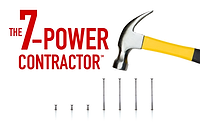Al Levi: The secret bonus of documenting how you do business
Operating manuals help boost ethical sales.

There are only two types of companies I’ve ever worked with in my 18 years of being a consultant to the contracting industry.
The first is a company that maybe has grown to five techs and the owners are finding out that they’re stuck. That’s because the business can’t run without them, and they’ve become the choke point. Plus, they’re running out of hours in a day, days in a week and weeks in a month to get everything they need to get done.
What they crave is the power of cloning. They don’t have that power and neither do I.
The second type of company I work with is a fast-growing company that is in total chaos. They look beautiful from the outside, but they’re a mad house on the inside. One of the owners of this type of company once described his company to me when we first began our work as, “A beautiful swan gliding smoothly across the water, but under the water their webbed feet are paddling like crazy to make that happen.”
These types of companies are like a beautiful home that’s been built atop either a broken foundation or missing a foundation all together to support the lovely place for the long haul.
The solution for both begins with documenting how they do their work.
Working with consulting clients, I take my Operating Manual templates that I first created at my company — and up-dated over the last 20 years — and I help them tweak it to become their Operating Manuals. The lesson is it’s easier to edit than to create.
The impact of just these three key manuals — the CSR, Dispatcher and Tech Manuals — is what provides relief from the daily chaos in their businesses.
For small companies who are now stuck, they have a way to bring on more staff and grow past what the owners themselves must do. For fast-growing shops, it allows them to keep growing, but this time, in a smarter and more sustainable way.
All good stuff.
What I let them discover over time is “the secret bonus” of these operating manuals. Because I don’t reveal it until I do my sales training program with their techs and CSRs. The bonus is that well-written operating manuals help to boost ethical sales.
SEVEN REASONS WHY
- The CSR Manual trains CSRs to put techs in front of the right customer. This frees the tech up from wasting valuable productivity time explaining pricing and payment policies. This is learned in weekly meetings using the CSR Manual for phone role-playing.
- The Dispatch Manual trains dispatchers to better prioritize the dispatching schedule. This minimizes unnecessary drive time and unhappy customers, because everyone knows the accurate appointment time.
- The Tech Manuals teach techs (as well as their trade manuals like plumbing, heating, cooling and/or electrical) to open the call properly and diagnose correctly in the allotted time before they quote a fee. The exit process ensures customer education and satisfaction, which minimizes buyer’s remorse and stupid callbacks. All of this allows more time to make new sales happen.
- The Tech Manual remind techs to assess the whole job and not sell stuff customers don’t need. This minimizes callbacks, sells the right repair (or, advises if a replacement is justified) while enhancing the customer experience by identifying comfort, safety, healthy living and efficiency improvements, to name a few.
- The trade manuals have great questions to get the customer talking. After all, they live there. There’s no need to diagnose the job until you diagnose the customer. You must know what they need and what they want. The only way to do that effectively is to ask questions, and write or type their answers for later.
The sales advantage is clear. If you’re talking, you’re selling. If a customer is talking, you’re verifying and you’re listen-ing to their answers; they’re buying. The other added bonus is when customers feel they’ve been listened to, their buyer’s remorse is reduced. The likelihood of great customer testimonials rises.
- The trade manuals urge techs to follow best practices wherever and whenever applicable to avoid doing a stupid repair, a bad repair or an incomplete repair. For example: A Tech only does a flapper replacement on a 20-year-old toilet. The likelihood is they’ll be back for a handle or something else and the customer is not going to be happy.
Eliminate partial repairs that invite callbacks by either doing a rebuild or a new toilet replacement, depending on the age of the toilet. Yes, it improves sales, but it’s in the customer’s best interest, as it must always be.
- The trade manuals are filled with objective gateway scenarios about when to recommend a replacement and/or a repair option. For example: A Tech finds the cooling system is extremely low on refrigerant. The unit is 25 years old. Even if the leak was found, any new cooling system is bound to be more reliable, energy efficient and provide better cooling. It’s time to have a discussion about a replacement option.
The secret bonus of operating manuals is ethical sales opportunities are presented at the time of service. Everyone wins in this scenario.
Looking for a reprint of this article?
From high-res PDFs to custom plaques, order your copy today!










